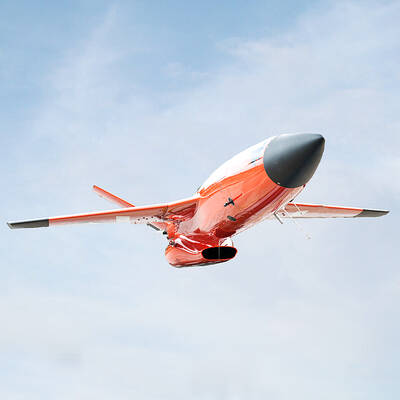The Tainan City Government has decided to persuade Falun Gong protesters to leave a historic site where they have maintained a constant presence to highlight their cause.
City government officials yesterday said the decision was reached after a meeting on Monday. If their efforts to communicate with the protesters fail, they will consider further steps, the officials said.
The city was particularly concerned about the possibility of a repeat of an incident on June 21 as the city gears up to welcome the expected influx of Chinese tourists next month.
On that day, a delegation of Chinese travel representatives visited the historic Fort Provincia in Tainan City. The fort was built in 1653.
Fearing that Chinese visitors would clash with the Falun Gong protesters gathered at the fort, the city government reportedly moved the protesters to another spot before arranging for the representatives to enter the fort via a side door.
In view of the city government’s handling of the Falun Gong devotees, some Democratic Progressive Party (DPP) city councilors yesterday expressed concern about the matter, calling on the city government not to remove or use any forceful action against the group.
Tainan Mayor Hsu Tain-tsair (許添財) has previously stated his support for freedom of speech. The city government’s cultural and tourism bureau yesterday said that the city government has long respected the religious thought and freedom of Falun Gong and would not use force against the group.
According to city officials, Falun Gong devotees have gathered in front of the fort for a long time, which officials believe has put tremendous pressure on the city’s tourism.
Bureau chief Hsu Keng-hsiu (許耿修) said that Falun Gong devotees have long maintained a presence in front of Fort Provincia and on the sidewalk of the 300-year-old Sacrificial Martial Temple nearby.
They also post signs, which he said violate traffic regulations restricting the posting of advertisements.
The city government will first “try to persuade them to leave,” and will “refrain from forcing them to disperse for the time being,” he said.
As for the protesters at Anping Fort, a fort in suburban Tainan built by the Dutch in 1624, Hsu said they have rented a pavilion in front of the fort, and are not breaking the law or city regulations.
The city government will not “take any action there.”
China in 1999 outlawed Falun Gong, a spiritual practice invented by Li Hongzhi (李洪志). Li has said that Falun Gong is simply a popular qigong activity that does not have any particular organization, let alone any political objectives.
Falun Gong protesters have since gained the spotlight in many countries protesting against what they say is Beijing’s practice of torturing the movement’s practitioners.

‘WIN-WIN’: The Philippines, and central and eastern European countries are important potential drone cooperation partners, Minister of Foreign Affairs Lin Chia-lung said Minister of Foreign Affairs Lin Chia-lung (林佳龍) in an interview published yesterday confirmed that there are joint ventures between Taiwan and Poland in the drone industry. Lin made the remark in an exclusive interview with the Chinese-language Liberty Times (the Taipei Times’ sister paper). The government-backed Taiwan Excellence Drone International Business Opportunities Alliance and the Polish Chamber of Unmanned Systems on Wednesday last week signed a memorandum of understanding in Poland to develop a “non-China” supply chain for drones and work together on key technologies. Asked if Taiwan prioritized Poland among central and eastern European countries in drone collaboration, Lin

The Chien Feng IV (勁蜂, Mighty Hornet) loitering munition is on track to enter flight tests next month in connection with potential adoption by Taiwanese and US armed forces, a government source said yesterday. The kamikaze drone, which boasts a range of 1,000km, debuted at the Taipei Aerospace and Defense Technology Exhibition in September, the official said on condition of anonymity. The Chungshan Institute of Science and Technology and US-based Kratos Defense jointly developed the platform by leveraging the engine and airframe of the latter’s MQM-178 Firejet target drone, they said. The uncrewed aerial vehicle is designed to utilize an artificial intelligence computer

Renewed border fighting between Thailand and Cambodia showed no signs of abating yesterday, leaving hundreds of thousands of displaced people in both countries living in strained conditions as more flooded into temporary shelters. Reporters on the Thai side of the border heard sounds of outgoing, indirect fire yesterday. About 400,000 people have been evacuated from affected areas in Thailand and about 700 schools closed while fighting was ongoing in four border provinces, said Thai Rear Admiral Surasant Kongsiri, a spokesman for the military. Cambodia evacuated more than 127,000 villagers and closed hundreds of schools, the Thai Ministry of Defense said. Thailand’s military announced that

CABINET APPROVAL: People seeking assisted reproduction must be assessed to determine whether they would be adequate parents, the planned changes say Proposed amendments to the Assisted Reproduction Act (人工生殖法) advanced yesterday by the Executive Yuan would grant married lesbian couples and single women access to legal assisted reproductive services. The proposed revisions are “based on the fundamental principle of respecting women’s reproductive autonomy,” Cabinet spokesperson Michelle Lee (李慧芝) quoted Vice Premier Cheng Li-chiun (鄭麗君), who presided over a Cabinet meeting earlier yesterday, as saying at the briefing. The draft amendment would be submitted to the legislature for review. The Ministry of Health and Welfare, which proposed the amendments, said that experts on children’s rights, gender equality, law and medicine attended cross-disciplinary meetings, adding that